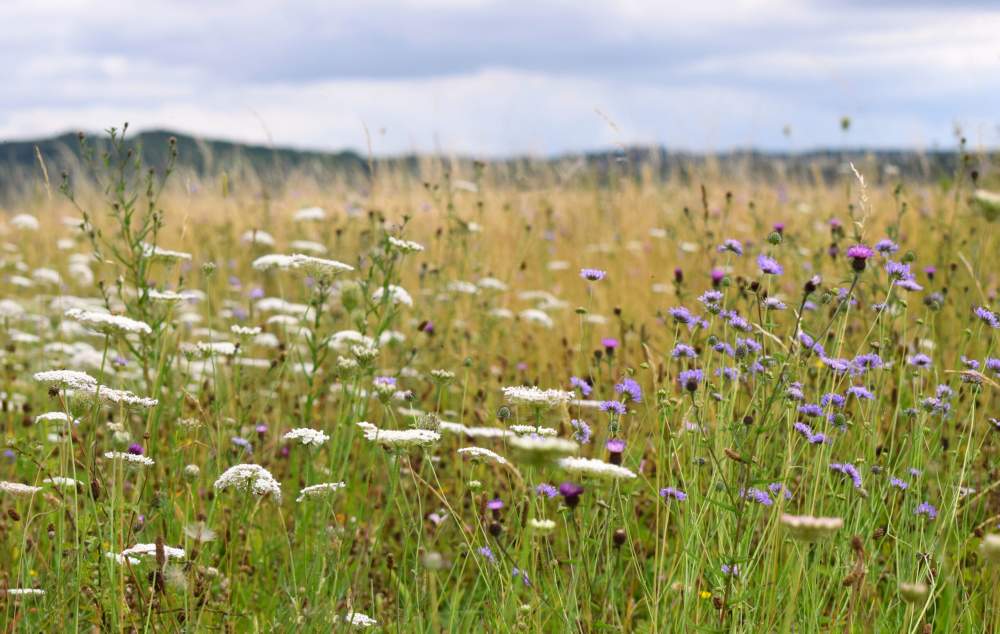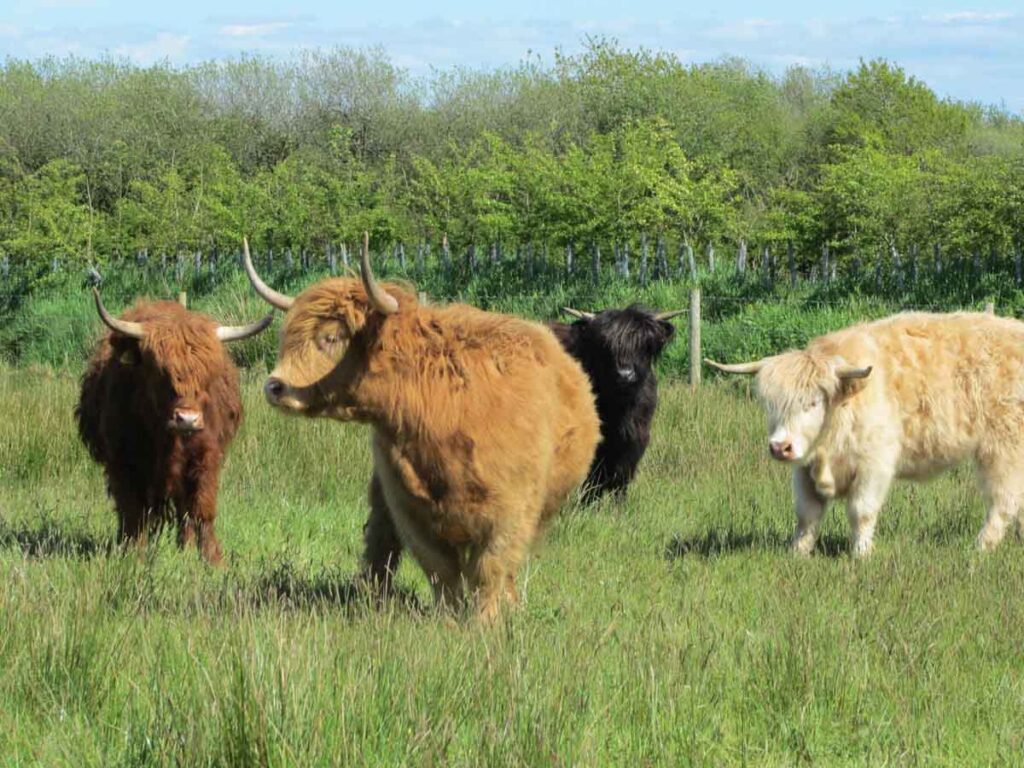Creating and Maintaining Wildflower Meadows in Dorset: A Comprehensive Guide
In Dorset, wildflower meadows are a defining part of the landscape. These meadows are a sight to behold, from the rolling hills to the vibrant colors that brighten the countryside. However, maintaining and creating these wildflower meadows isn’t always straightforward.
That’s why we’ve compiled this comprehensive guide on creating and maintaining wildflower meadows in Dorset. We’ll cover everything from the basics of preparing your site to how to restore an existing wildflower meadow. Along the way, we’ll also explain how you can use our expertise to help make your project successful.
So if you’re dreaming of having a beautiful wildflower meadow in Dorset, this guide is for you! Let’s begin our journey into the beautiful world of wildflowers in Dorset.
What Are Wildflower Meadows and Why Are They Important?
When you take a walk along one of Dorset’s many wildflower meadows, you can be sure of two things: the stunning natural beauty and the knowledge that you’re doing something meaningful to help protect our planet. Wildflower meadows are an increasingly rare sight in Britain, but this doesn’t mean that it’s too late to restore or create them in Dorset.
So what is a wildflower meadow? It’s essentially an open area of land on which one or more flower species grow prominently, creating a habitat for local wildlife, providing nectar for bees and insects, and generally helping to support our fragile environment. Perhaps most importantly, wildflower meadows also have a great aesthetic appeal; they provide an array of vibrant colors that add life to the landscape.
Wildflower meadows are vital for helping conserve our planet’s biodiversity and ensuring we all enjoy its beauty for years.
The Key Species of a Dorset Wildflower Meadow
You may wonder what plants typically make up a wildflower meadow in Dorset. While every meadow is unique, certain species can be found throughout the region.
Here’s a list of some of the key species to look out for:
- Bluebells (Endymion non-scriptus): These fragrant flowers are native to the UK and provide a plentiful source of nectar for bees and other pollinators.
- Cowslip (Primula veris): Another classic native flower, this delicate shrub grows in clusters and adds splashes of yellow to meadows from March to June.
- Common Sorrel (Rumex Acetosa): This grassy plant is more low-lying than many wildflowers but adds texture to a meadow landscape. It’s also an edible species to add to your meals!
- Oxeye Daisy (Leucanthemum Vulgare): This daisy is beautiful and very important for bees, particularly as one of its primary sources of nectar.
- Red Campion (Silene dioica): This vibrant pink flower likes damp soil so you may find it in or around streams or wetlands.

How to Protect and Promote a Wildflower Meadow in Dorset
When it comes to protecting and promoting a wildflower meadow in Dorset, there are a few key steps you need to take. Whether restoring an existing meadow, creating a new one, or simply maintaining the meadow on your property, the following tips will help ensure your wildflower meadow thrives.
Mowing
One of the best and most important ways to protect and promote your wildflower meadow is to practice smart mowing. Mowing provides many benefits for wildflowers, including additional growing space for new flowers since it reduces competition for light and nutrients. It can also act as an effective means of weed control. But also mowing benefits native wildlife; controlling too much growth can create better habitats by providing more open spaces. For best results, mow your meadow once or twice a year at the correct times (typically in late summer), and always avoid cutting too low.
Fertilizing
Fertilizing isn’t typically recommended when caring for wildflower meadows. Excessive fertilizer can do more harm than good by disrupting soil chemistry and leading to unnatural growth spurts in some species, diminishing others. If you want to promote native nutrient-poor soils like those found in Dorset, using slow-release fertilizers with low nitrogen levels can help replenish necessary nutrients without creating an imbalance in the environment.
Watering
Contrary to popular belief, wildflower meadows don’t need any watering.
Benefits of Maintaining a Wildflower Meadow
Maintaining and restoring a wildflower meadow in Dorset can benefit you and the local environment. By preserving your existing meadow or creating a new one, you can help keep this habitat thriving. Here are some of the advantages you’ll enjoy:
Esthetic Appeal
Wildflower meadows provide a stunning visual backdrop for your home. Flowers and plants like cornflowers, scabious, and bee orchids fill the area with vibrant colors, pleasing sights, and delightful scents. Take the time to create or restore a meadow; you’ll have something unique to admire in your neighborhood.
Biodiversity
By restoring an old wildflower meadow or creating a new one, you’re doing your part to support wildlife in Dorset. These habitats are recognized as virtual environments that provide safe havens for plants and animals. You can help preserve biodiversity by allowing species to feed, breed and thrive on your land.
Soil Quality
Preserving existing wildflower meadows in Dorset or creating new ones brings help to maintain soil quality; this is especially important these days due to the increase of pollution from roads, agricultural practices, and construction activities all over the county. The roots of wildflowers can bind the soil together; plus, they attract microorganisms that help break down organic material, thus improving soil fertility in your area.
How to Restore an Existing Meadow
Maintaining an existing wildflower meadow can be as rewarding as creating one from scratch. That’s why we’re dedicating this section to helping you understand how to restore an existing wildflower meadow in Dorset.
Meadow restoration is about achieving a specific balance between native plant species and habitats. To do this, you’ll need to assess the health, diversity, and complexity of the existing meadow before selecting the method that fits your goals regarding restoring and maintaining it.
Steps for restoring an existing meadow
- Evaluate – Observe the soil type and fertility; which plants are most abundant; check for seed banks; set measurable success criteria.
- Thin – For some dense patches, thinning out may be necessary to foster the growth of other species or limit weed domination in a specific area.

3. Grazing – If suitable, grazing can be used with mowing to control weeds and encourage desired plant species within the meadow ecosystem.
2. Mow – Depending on your desired outcome, mowing may be used either annually or bi-yearly for maintenance purposes or after thinning.
4. Seeds – If there are any bare patches, adding other seeds during certain times of the year can help establish those areas as part of the wildflower meadow ecosystem you’re aiming for.
5. Monitoring & Maintenance – After all that hard work, it’s essential to take steps towards monitoring your efforts over time and continue maintenance activities such as thinning as needed.
How to Create a New Meadow From Scratch
Creating a new wildflower meadow in Dorset can be pretty straightforward, and it doesn’t have to take a ton of time or energy. All you need is some essential preparation and suitable materials. Here are the steps to take when creating a wildflower meadow from scratch:
Assess and Prepare the Site
Before you do anything else, assessing your site and preparing it for planting is essential. For starters, you’ll want to ensure that no existing vegetation needs to be removed. Removing existing vegetation can disrupt local wildlife and soil chemistry. Once the area is clear of unwanted plants, you can consider amendments like compost or fertilizer to create the best environment for your wildflowers.
Choose Your Wildflower Mix
You can choose what kind of wildflower mix will work best for your site. Start by deciding what environment your mix will inhabit, sunny, partial sun/shade, or more shady conditions. Would your soil prefer more native species or an ornamental mix? Looking into these kinds of questions should help narrow down your choices when picking a seed mixture.
Planting
When it comes time to plant, there are two methods: direct seeding or plugging. Direct seeding involves scattering seeds over the soil surface while plugging requires making small holes with a dibble stick and placing individual flower plugs directly into the ground. Make sure that whatever method you choose, you leave enough room for each flower to reach its mature size — crowding too many flowers together can lead to competition for nutrients and water that will harm all involved!
Creating a beautiful wildflower meadow from scratch does
require some planning, but the results will be worth it. If you want to ensure the success of your flowering meadow, be sure to water your seeds and seedlings after planting and keep the area weed-free during the first year.
Once your wildflowers have begun to bloom, you can let nature take its course. Wildflower meadows are like little ecosystems, bringing a new array of flowers and wildlife each season. You may add additional native species over time, allowing your meadow to evolve and change over time.
No matter what you choose to do, with a little bit of effort, you can create a stunning wildflower meadow that will inspire local wildlife, visitors, and you. Enjoy the process of creating and maintaining your wildflower meadow, and you’ll be sure to be enchanted by the results!
Wildahome - Dorset Wildflower Seeds & Meadow Creation
Creating a wildflower meadow in Dorset is an enriching experience and a great way to spruce up your outdoor area. With a few simple steps, you can set yourself up for success and enjoy a vibrant and diverse ecosystem in no time.
Ensuring your meadow is regularly managed and maintained will guarantee it will continue providing beauty and biodiversity for years. With the help of local experts and resources, you can create and maintain a wildflower meadow that will provide a unique and memorable experience for you and the guests you entertain. With some love and effort, your meadow in Dorset will thrive!
Frequently Asked Questions
Where can I purchase your locally sourced wildflower seeds in Dorset?
Wildahome is one of the UK’s leading growers and suppliers of wildflower seeds. Sourcing from our own and partner farms throughout the UK, we supply native British wildflower seeds for Dorset and nearby county projects
What are the best wildflowers to plant or sow in Dorset?
Some species of wildflowers will be found throughout the UK, and others are specific to certain areas, counties or soil types. Wildahome would advise sowing seeds sourced locally or containing wildflower seeds suited to your location or soil type.
When is the best time to sow or plant wildflower seeds in Dorset?
Wildflower seeds and wildflower seed mats can be sown throughout the year, but the optimal times are generally early Autumn or Mid Spring. However, this varies by region and general yearly weather conditions. Planting wildflower seeds in Dorset usually is in Autumn and Spring.
How do I properly prepare the soil for wildflower planting?
Ensuring soil has a low nutrient level and then gently breaking up/disturbing the soil’s surface. If the soil is heavy clay, adding some compost or sand may sometimes be necessary – please check beforehand.
What is the recommended spacing for wildflower seeds to ensure healthy growth?
If you are using a 100% wildflower seed mix, we would recommend 1-2g per m2, and if you are using an 80/20 wildflower seed and grass mix, this would be 5g m2


